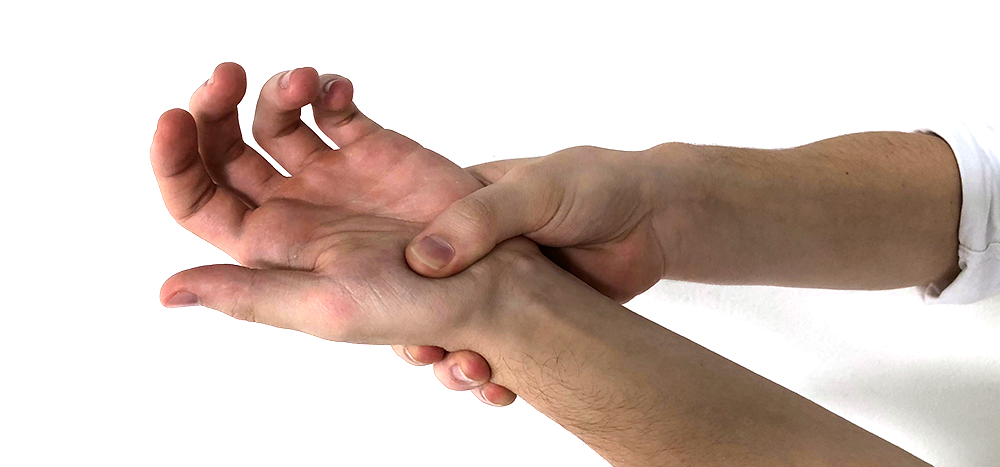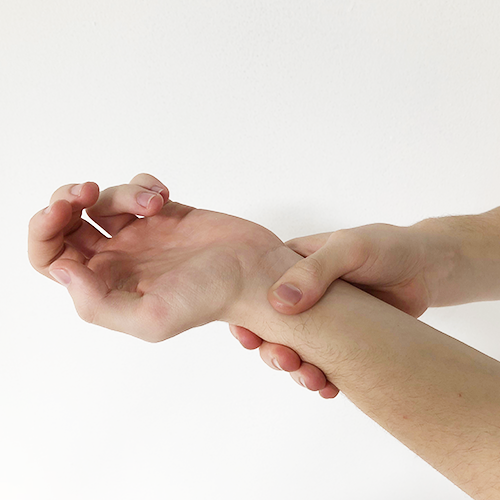Anatomy
The median nerve travels from the forearm to the inside of the hand by through the carpal tunnel in the wrist. The median nerve controls the feeling on the palm side of the middle finger, index finger and thumb. The nerve also controls the muscles surrounding the base of the thumb. The tendons that flex the fingers also travel through the carpal tunnel. These tendons are called flexor tendons.
Cause
Carpal tunnel syndrome can occur when the tissue surrounding the flexor tendons in the wrist swell, resulting in pressure on the median nerve. This tissue is known as the synovial membrane. The synovial membrane works as a lubricant for the tendons and facilitates the movement of the fingers.
Swelling of the membrane can reduce the space in the carpal tunnel and, with time, compromise the nerve.
Many things can contribute to the development of carpal tunnel syndrome:
- Inheritance is the most important factor. In some, the carpal tunnel can be smaller and this can be passed on through generations.
- Frequent or repetitive use of the hand can also play a role in its development.
- Hormonal changes related to pregnancy can affect the chances of development.
- Age: the condition occurs more frequently in older people.
- Medical conditions including diabetes, rheumatoid arthritis and an imbalance in the thyroid gland can also play a part in the development.
Symptoms
The most common symptoms of carpal tunnel syndrome include:
- Numbness, tingling and pain in the hand
- An electric shock-like sensation, mostly in the thumbs, index or middle fingers
- Strange sensations and pain that travel through the arm and can reach the shoulder
Symptoms can generally appear gradually, without any specific injury. In most people, the symptoms tend to be more pronounced on the thumb side of the hand.
Exercises for Carpal Tunnel Syndrome
(Extending fingers). Repeat 40 times.
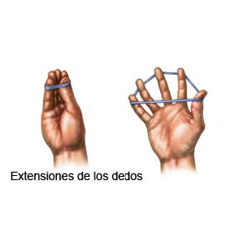
(Stretching the wrist flexor). Maintain this position for 10 seconds. Repeat 5 times.
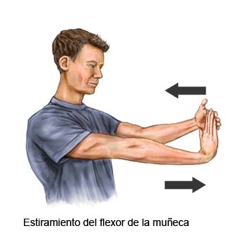
(Stretching the wrist extensor muscles). Maintain this position for 10 seconds. Repeat 5 times.
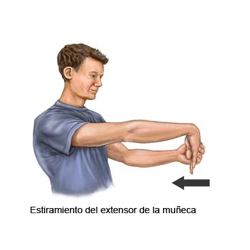
With the palm of your hand facing down, flex the wrist 3 inches upwards, then lower slowly. Flip you arm over and repeat with your palm facing up. Repeat both ways 20 times.

(Shrugging the shoulders). Stand with both arms by your sides. Raise your shoulders up to your ears and sustain for 1 second. After, move your shoulders back, as if attempting to make the shoulder blades meet. Maintain position for 1 second. Then, relax shoulders. Repeat 20 times.
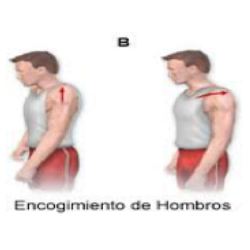
SÍNDROME DEL TÚNEL CARPIANO
Anatomía
El nervio mediano viaja desde el antebrazo hacia el interior de la mano a través de este túnel en la muñeca. El nervio mediano controla las sensaciones en el lado palmar de los dedos pulgar, índice y medio. El nervio también controla los músculos alrededor de la base del pulgar. Los tendones que flexionan los dedos de la mano también viajan a través del túnel carpiano. Estos tendones se llaman tendones flexores.
Causa
El síndrome del túnel carpiano ocurre cuando los tejidos que rodean a los tendones flexores en la muñeca se inflaman y hacen presión en el nervio mediano. Estos tejidos se llaman membrana sinovial. La membrana sinovial lubrica los tendones y facilita el movimiento de los dedos.
La inflamación de la membrana sinovial reduce el espacio limitado del túnel carpiano y, con el paso del tiempo, comprime al nervio.
Muchas cosas contribuyen al desarrollo del síndrome del túnel carpiano:
- La herencia es el factor más importante, los túneles carpianos son más pequeños en algunas personas y este rasgo puede repetirse en las familias.
- El uso de la mano con el paso del tiempo puede jugar un papel.
- Cambios hormonales relacionados al embarazo pueden jugar un papel.
- La edad: la enfermedad ocurre más frecuentemente en personas mayores.
- Condiciones médicas, incluyendo diabetes, artritis reumatoide y desequilibrio de la glándula tiroides pueden jugar un papel.
Síntomas
Los síntomas más comunes del síndrome del túnel carpiano incluyen:
- Adormecimiento, hormigueos y dolor en la mano
- Una sensación de descarga eléctrica, sobre todo en los dedos pulgar, índice y medio
- Sensaciones extrañas y dolor que recorren el brazo y suben hacia el hombro
- Los síntomas por lo general comienzan gradualmente, sin una lesión específica. En la mayoría de las personas, los síntomas son más severos en el lado del pulgar de la mano
Ejercicios Para El Síndrome Del Túnel Carpiano
1. Repita 40 veces.
2. Sostenga está posición por 10 segundos. Repita 5 veces.

3. Sostenga está posición por 10 segundos. Repita 5 veces.

4. Con la palma de su mano hacia abajo, flexione la muñeca 3 pulgadas hacia arriba y luego bájela lentamente. Voltee el antebrazo y repita con la palma hacia arriba. Haga cada ejercicio 20 veces.

5. Párese con los brazos a los lados. Levante sus hombros hacia sus oídos y sosténgalos durante 1 segundo. Luego mueva sus hombros hacia atrás, como si fuera a juntar los omóplatos. Mantenga esta posición durante 1 segundo. Luego relaje los hombros. Repita 20 veces.


